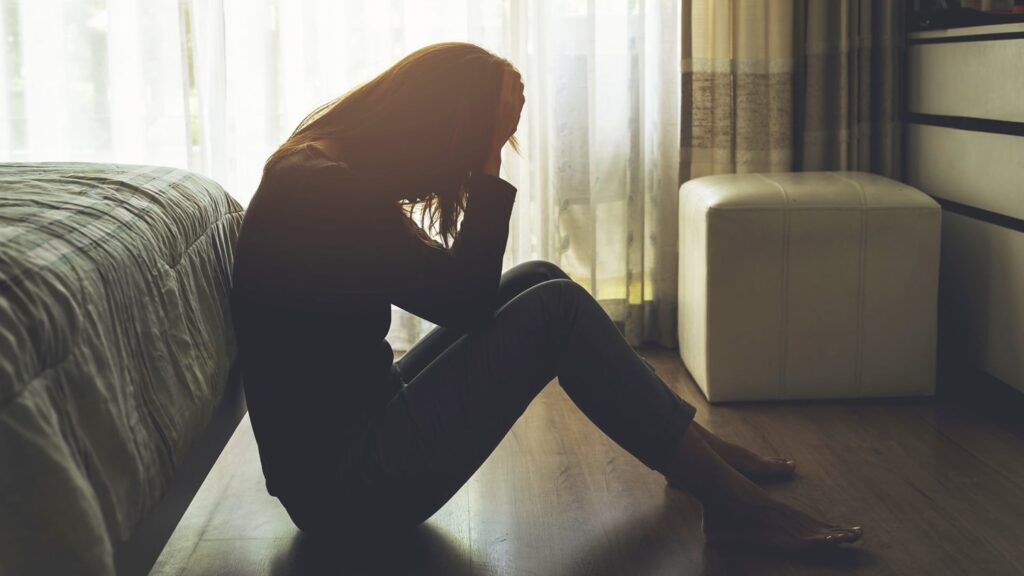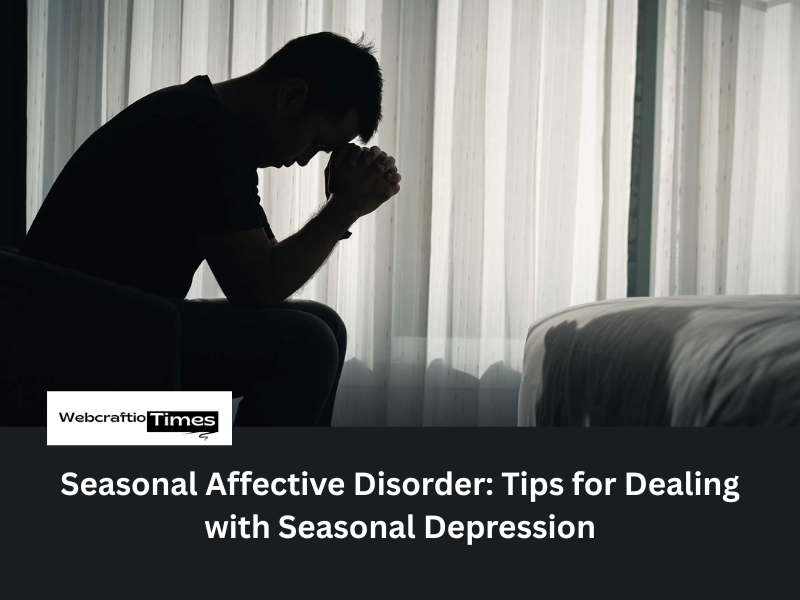Shorter days, less sunlight, and frequently a decline in mood and energy are all part of the seasonal shift, especially as we move into autumn and winter. While many people suffer from the temporary “winter blues,” a considerable portion of the population suffers from Seasonal Affective Disorder (SAD), a more serious illness brought on by this seasonal change.
SAD, a seasonal subtype of major depression, can significantly affect day-to-day functioning by causing chronic sadness, exhaustion, excessive sleeping, and a loss of interest in activities.
The good news is that it is possible to deal with seasonal depression. You can actively apply a variety of efficient, research-based techniques by being aware of the root causes, which frequently include disturbances to the body’s natural circadian rhythm, serotonin levels, and melatonin production as a result of less sunlight.
In order to help you get through the darker months and welcome a lighter, more balanced winter, this thorough guide will offer helpful advice and treatment options.
The Foundations of Management: Light, Mind, and Body
Managing SAD requires an approach that involves both essential lifestyle changes and clinical treatments. We’ll go over the three main pillars of managing seasonal depression: making the most of your physical health, utilising light therapy, and giving mental wellness top priority through social interaction and therapy.

1. Harness the Power of Light: The Primary Treatment
Since the reduction of natural sunlight is the key trigger for fall- and winter-onset SAD, compensating for this deficit is a highly effective first-line treatment.
- Light Therapy (Phototherapy): This involves being in front of a special light box for a set amount of time, usually 20 to 30 minutes every morning. The suggested gadget should filter out dangerous ultraviolet (UV) rays while offering 10,000 lux of bright, full-spectrum white light exposure. Important Tip: Make use of the light box within the first hour of waking up.
Read More : Side Effects of Energy Drinks On Mental Health : What You Really Need to Know
The circadian system is reset, mood-enhancing chemicals like serotonin are regulated, and the hormone that induces sleep, melatonin, is suppressed thanks to this early morning exposure. Before beginning, speak with your healthcare provider, particularly if you are taking medication that is sensitive to light or have an eye condition.
- Maximize Natural Light Exposure: Simple environmental changes can make a big difference. Open all blinds and curtains, trim tree branches that block sunlight, and sit near bright windows at home and work.
- Get Outside Daily: Even on a cloudy day, outdoor light is significantly brighter than indoor lighting. Make it a non-negotiable habit to take a brisk walk, eat lunch in a park, or simply sit outside for 10-30 minutes, especially around midday or in the early morning. This is particularly beneficial for synthesizing Vitamin D, a deficiency of which is often linked to depressive symptoms.
2. Prioritize Mental Wellness: Therapy and Connection
Seasonal depression can lead to isolation and a cycle of negative thinking. Engaging with others and seeking professional guidance are vital for long-term management.
- Cognitive Behavioral Therapy (CBT): Research shows that CBT, particularly a variation tailored for SAD (CBT-SAD), can be one of the most effective and long-lasting treatments. It focuses on identifying and changing negative thought patterns (e.g., “I’ll never get through this winter”) and behavioral changes, such as reducing avoidance of social or physical activities and planning meaningful events.
- Stay Socially Connected: When you’re low on energy, the instinct is to withdraw, but isolation exacerbates depression. Actively schedule social engagements, even small ones like a coffee date or a video call with a distant friend. Sharing your experience with a trusted support network allows them to check in on you and hold you accountable for commitments.
- Practice Stress Management: Unmanaged stress can heighten depression symptoms. Incorporate relaxation techniques into your daily routine. Mindfulness, deep-breathing exercises, yoga, or a creative hobby like painting or journaling can help build emotional resilience and calm the mind.
- Keep a Mood Diary: Tracking your symptoms can help you recognize the patterns of SAD and, crucially, identify the activities and practices that make you feel better. This awareness allows you to preemptively plan for difficult periods.
3. Nurture Your Body: Diet, Exercise, and Sleep
Your physical health plays a critical role in your mental well-being. Focusing on these foundational elements can significantly alleviate SAD symptoms.
Want More Tips : Visit Us
- Regular Physical Activity: Exercise is a powerful natural mood booster. It releases endorphins, reduces stress and anxiety, and can improve sleep quality. Aim for at least 30 minutes of moderate-intensity exercise three to five times a week. Crucially, try to combine your workout with your daylight exposure, an outdoor walk or jog is a two-for-one mood lifter.
- Optimize Your Diet: During SAD, the body often craves high-carb, starchy, and sugary comfort foods, which can lead to weight gain and energy crashes. Focus on a balanced, nutrient-dense diet rich in:
- Omega-3 Fatty Acids: Found in oily fish, flaxseeds, and walnuts, which support brain health.
- Complex Carbohydrates: Whole grains and vegetables provide steady energy levels.
- Lean Proteins: For sustained energy and satiety.
- Mindful Sleep Routine: While oversleeping is a common symptom of SAD, excessive rest can worsen feelings of sluggishness. Establish and stick to a consistent sleep-wake schedule, even on weekends. Aim for 7-9 hours, and try to limit or eliminate napping to maintain your circadian rhythm. Consider a dawn simulator alarm clock, which gradually brightens your room, mimicking a sunrise and making it easier to wake up.
- Talk to Your Doctor about Supplements: While more research is needed, many people with Seasonal Affective Disorder benefit from a Vitamin D supplement due to reduced sun exposure. Always consult your healthcare provider before starting any new supplement to ensure the correct dosage and rule out other deficiencies.
When to Seek Professional Help
If your symptoms are severe, include thoughts of self-harm, or are significantly interfering with your relationships, work, or daily functioning, it is essential to seek professional help. Treatment may also include prescription medications, such as Selective Serotonin Reuptake Inhibitors (SSRIs), which your doctor may recommend starting before your symptoms typically begin each year.
Seasonal Affective Disorder is a legitimate medical condition, not a personal failing. By taking proactive steps, literally and figuratively, to increase light, move your body, and nurture your mind, you can gain control over your mood and look forward to the changing seasons with resilience and a renewed sense of well-being.
5 FAQs on Seasonal Affective Disorder (SAD)
Q1. What is the difference between SAD and the “winter blues”?
A: The “winter blues” (subsyndromal SAD) are typically mild, short-lived feelings of low energy or sadness. SAD is a clinical diagnosis, a subtype of major depression, with symptoms that are more severe, lasting (usually 4-5 months), and significantly interfere with daily life and functioning.
Q2. How long does Light Therapy take to start working?
A: Most people notice an improvement in their symptoms within a few days to two weeks of consistently using a 10,000 lux light box for 20-30 minutes each morning. To maintain the benefits, treatment must be continued daily throughout the symptomatic season.
Q3. Can Vitamin D supplements treat SAD?
A: While low Vitamin D levels are common in people with SAD, there is mixed evidence that supplements alone are an effective treatment for the depressive symptoms. However, they are often recommended to correct a deficiency and support overall health, but should be used in conjunction with other proven treatments like light therapy and lifestyle changes.
Q4. Is it possible to get SAD in the summer?
A: Yes, while less common, some people experience summer-onset SAD (reverse SAD). Symptoms often include insomnia, anxiety, loss of appetite, and agitation, as opposed to the oversleeping and increased appetite typical of winter-onset SAD.
Q5. What is the most important lifestyle change for managing SAD?
A: Consistently getting outdoor exposure to natural daylight, ideally within the first two hours of waking—is arguably the most crucial lifestyle change. This helps regulate the body’s internal clock and neurotransmitter levels, even if the weather is cloudy.



